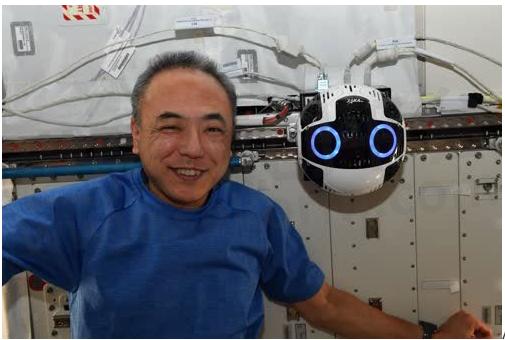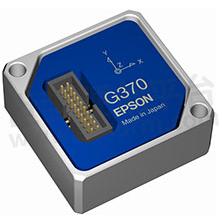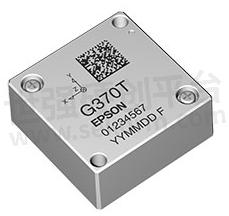Epson IMU Adopted by JAXA for “Int-Ball2“ Free-flying Camera Robot Used on ISS Japanese Experiment Module

Seiko EPSON Corporation (TSE: 6724, "Epson") is pleased to announce that an inertial measurement unit (IMU) from Epson's M-G370 series was selected by the Japan Aerospace Exploration Agency (JAXA) for use in a mobile camera robot deployed on "Kibo", the Japanese Experiment Module (JEM) on the International Space Station (ISS). Developed by JAXA, the "Int-Ball2 (Internal Ball Camera 2)" free-flying camera robot, has been undergoing functional verification inside Kibo since June 2023.
From fiscal 2024 onward, Epson will pursue the development of IMUs for the so-called "New Space" sector. These IMUs will be used in things such as small satellites that utilize consumer and industrial products, which require higher levels of cost performance and shorter delivery times.

Int-Ball2 during flight checkout© JAXA/NASA
Int-Ball2 is an onboard drone robot that aims to support astronauts on the ISS. It is operated remotely by ground control and is able to fly around the ISS taking photos and videos. The camera is used to capture images of the astronauts as they conduct various experiments and are shared with the ground control team. Currently, the astronauts working in Kibo have to spend time adjusting the camera settings and angle of view. With the Int-Ball2, the ground control team can directly control the video shooting process remotely. This is expected to significant reduce the astronaut workload.
While aboard the ISS, Japanese astronaut Satoshi Furukawa worked with ground controllers to perform initial functional checks on Int-Ball2.

Astronaut Satoshi Furukawa and Int-Ball2 as it docks at the docking station© JAXA/NASA
Int-Ball2 is designed to automatically depart and return to its docking station for recharging. but in the ISS, it must navigate in a micro-gravity environment.
To do so, it is required to estimate its 3DoF position (X, Y, Z) and 3DoF rotational attitude (roll, pitch, and yaw). Int-Ball2 estimates its position by fusing Visual Simultaneous Localization and Mapping (VSLAM) and IMU data. JAXA has successfully demonstrated Int-Ball2's flight capabilities as well as functional confirming the automated release and docking.
The Epson IMU used in Int-Ball2 testing is a small, lightweight, yet extremely precise device that helps estimate spatial position and rotational attitude during its flight.

IMU inside Int-Ball2© JAXA/MEISEI
Main features of the M-G370 series
Uses an original crystal gyroscopic sensor for high precision and stability
Gyro bias instability 0.8°/√h Angle random walk 0.06-0.03°/√h
Compact and lightweight (1" square and 10 grams)
Low power design (3.3 V, 16 mA)

M-G370T connector face

M-G370T marking face
In February 2024, the new M-G370PDT, with improved angle random walk and linearity of the gyroscopic sensor, was added to the series lineup. The M-G370PDT can be used in the building of various applications.
Sample applications
Vibration control for small satellites1 that use commercial and industrial products, EO/IR camera gimbals2, and antennas
Vibration, angle, and orbit measurements for unmanned equipment (industrial drones, terrestrial vehicles, ocean bottom exploration probes) and industrial equipment
Navigation systems
- +1 Like
- Add to Favorites
Recommend
- News | Epson Launches 4th-Generation Optical Engine for Smart Glasses
- Epson Expands Its Lineup of G-series IMUs with the Development of M-G366PDG and M-G330PDG
- Epson‘s High-performance Cushioning Material Wins the WorldStar Global Packaging Awards 2024 in the Electronics Category
- Seismic Intensity Meters Equipped with Epson‘s M-A352 Accelerometer Certified by the Japan Meteorological Agency
- Epson Develops an New Industrial 3D Printer that Can Use Commonly Available Materials
- High-stability GYRO Sensor by Epson with Bias Output Stability and Low Noise
- Epson Becomes the Manufacturing Industry‘s First to Switch to 100% Renewable Electricity at All Sites in Japan
- Epson to Start Selling New Sensing Technologies and Launch New Sensing Analysis Technology Business
This document is provided by Sekorm Platform for VIP exclusive service. The copyright is owned by Sekorm. Without authorization, any medias, websites or individual are not allowed to reprint. When authorizing the reprint, the link of www.sekorm.com must be indicated.





























































































































































































































































































































































































































































































































































































































































































































































































































































































